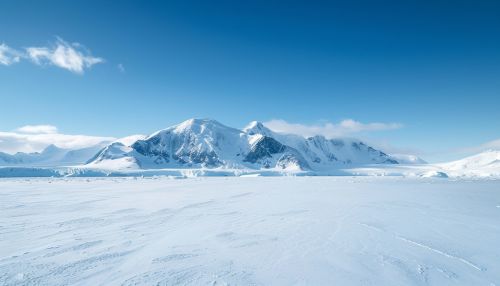Environmental Protection Protocol to the Antarctic Treaty
Introduction
The Protocol on Environmental Protection to the Antarctic Treaty, also known as the Madrid Protocol, is an international agreement that provides comprehensive protection to the Antarctic environment and dependent and associated ecosystems. The Protocol was adopted on October 4, 1991, and entered into force on January 14, 1998, after the ratification by all Consultative Parties to the Antarctic Treaty.


Background
The Antarctic Treaty, signed in 1959, originally contained no specific environmental protection measures. However, as human activity in the region increased, concerns about potential environmental damage led to the adoption of several measures aimed at protecting the Antarctic environment. These included the Convention for the Conservation of Antarctic Seals (1972), the Convention for the Conservation of Antarctic Marine Living Resources (1980), and the Convention on the Regulation of Antarctic Mineral Resource Activities (1988). Despite these measures, it was felt that a more comprehensive approach was needed, leading to the adoption of the Protocol on Environmental Protection to the Antarctic Treaty.
Provisions of the Protocol
The Protocol designates Antarctica as a "natural reserve, devoted to peace and science" and sets out a series of principles and measures to protect the Antarctic environment. These include:
- A ban on all commercial mineral resource activity (other than scientific research)
- A requirement for prior assessment of the environmental impacts of all activities
- A commitment to minimize waste and to clean up past waste disposal sites
- A commitment to conserve Antarctic fauna and flora
- A requirement to restrict the number and scale of Antarctic stations
- A requirement to limit tourism and other non-governmental activities
- A commitment to enhance international cooperation in scientific research
The Protocol also established the Committee for Environmental Protection (CEP), an expert advisory body that provides advice and formulates recommendations to the Antarctic Treaty Consultative Meeting (ATCM) in connection with the implementation of the Protocol.
Implementation and Compliance
The Protocol is implemented through a series of Annexes, which provide detailed regulations on specific environmental issues. These Annexes cover environmental impact assessment, conservation of fauna and flora, waste disposal and waste management, prevention of marine pollution, and area protection and management.
Compliance with the Protocol is ensured through a system of inspections, carried out by observers appointed by the Consultative Parties. These observers have the right to inspect all stations, installations, equipment, ships, and aircraft in Antarctica to ensure that they are in compliance with the Protocol.
Challenges and Criticisms
While the Protocol has been largely successful in protecting the Antarctic environment, it has faced several challenges. These include the increasing impact of tourism, the potential for bioprospecting, the effects of climate change, and the potential for non-compliance by non-Consultative Parties.
Critics of the Protocol argue that it does not go far enough in protecting the Antarctic environment. They point out that it does not ban all human activity, only commercial mineral resource activity, and that it allows for the possibility of this ban being lifted in the future. They also argue that the Protocol's provisions on waste disposal and management are inadequate and that its enforcement mechanisms are weak.
Future Directions
The future of the Protocol is uncertain. While it has been successful in many respects, it faces significant challenges. The increasing impact of tourism, the potential for bioprospecting, and the effects of climate change all pose significant threats to the Antarctic environment. At the same time, the potential for non-compliance by non-Consultative Parties raises questions about the effectiveness of the Protocol's enforcement mechanisms.
Despite these challenges, the Protocol remains a crucial tool for the protection of the Antarctic environment. Its provisions provide a comprehensive framework for the protection of the Antarctic environment and its dependent and associated ecosystems. As such, it will continue to play a key role in the protection of this unique and fragile environment.
